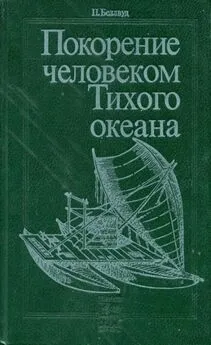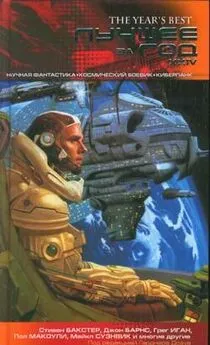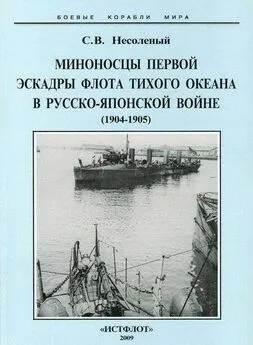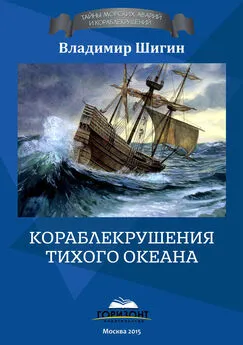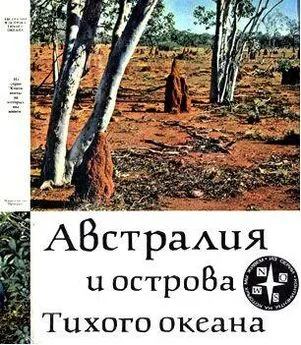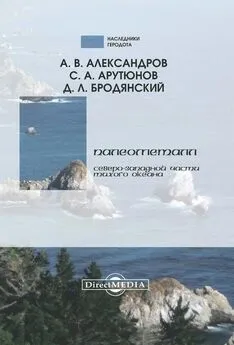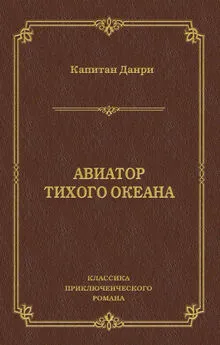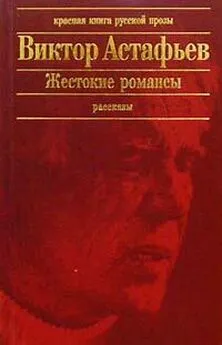Питер Беллвуд - Покорение человеком Тихого океана
- Название:Покорение человеком Тихого океана
- Автор:
- Жанр:
- Издательство:Наука, Главная редакция восточной литературы
- Год:1986
- Город:Москва
- ISBN:нет данных
- Рейтинг:
- Избранное:Добавить в избранное
-
Отзывы:
-
Ваша оценка:
Питер Беллвуд - Покорение человеком Тихого океана краткое содержание
Монография имеет междисциплинарный характер. В своем исследовании автор опирается на новейшие данные археологии, антропологии, этнографии, лингвистики.
Peter Bellwood. Man’s conquest of the Pacific. The Prehistory of Southeast Asia and Oceania, 1978.
Покорение человеком Тихого океана - читать онлайн бесплатно полную версию (весь текст целиком)
Интервал:
Закладка:
Некоторые авторы стремились показать, что полинезийские вождества возникли в самой Океании. Так, Р. Раппапорт считал, что они были порождены необходимостью совершенствовать систему управления на небольших островках с плотным и растущим населением [1119, с. 168]. В пользу этого говорит тот факт, что на Таити, Гавайях и Тонга, где велика абсолютная численность населения и высока его плотность, процесс формирования знати шел особенно интенсивно. Это характерно для всех ранних цивилизаций. В такой ситуации возникает нужда в вождях, правителях будущих государств, которые контролировали бы землепользование, поддерживали порядок, обеспечивали соблюдение законов и руководили распределением произведенных продуктов.
Однако скептик может спросить, почему же в Меланезии и островной Юго-Восточной Азии, где не было развитых вождеств, встречались большие популяции и высокая плотность населения. Дело в том, что относительно эгалитарные общества могут возрастать до очень крупных размеров, и папуасы Новой Гвинеи обходятся пока «большими людьми» в качестве распорядителей да системой свободной конкуренции. Поэтому я считаю, что надо придавать большее значение полинезийской аристократии, а не высокой плотности населения на мелких островах, хотя я еще не могу определить это значение.
Указанные проблемы очень важны; для их решения потребуется мобилизация всех методов, которыми располагает современная археология. Несмотря на обширные лакуны в наших знаниях, объем накопленных сведений о культурной истории Юго-Восточной Азии и Океании уже довольно велик. Но стоит отвлечься от истории культуры и перейти к изучению самого процесса развития, ставя вопросы «почему» и «как» вместо «где» и «когда», как перспективы исследования становятся поистине неограниченными.
Список сокращений
А — Anthropos
АА — American Anthropologist
AJPA — American journal of physical anthropology
AP — Asian perspectives
APAMNH — Anthropological Papers of the American Museum of Natural History
APAO — Archaeology and physical anthropology in Oceania
APAS — American and Pacific Archaeology Series
BAIM — Bulletin of the Auckland Institute and Museum
BEFEO — Bulletin de l’Ecole française d’Extrême-Orient
BIEAS — Bulletin of the Institute of Ethnology. Academia Sinica
BMFEA — Bulletin of the Museum of Far Eastern antiquities
BPBMB — Bernice P. Bishop Museum Bulletin
BPBMM — Bernice P. Bishop Museum Memoir
ВPBMOP — Bernice P. Bishop Museum Occasional Paper
ВPBMSP — Bernice P. Bishop Museum Special Piblication
BSEI — Bulletin de la Société des Etudes indochinoises
BSGI — Bulletin du Service Géologique de l’Indochine
CA — Current authropology
CMB — Canterbury Museum Bulletin
DMB — Dominion Museum Bulletin (Wellington)
DMM — Dominion Museum monograph (Wellington)
EM — Etudes mélanésiennes
FMJ — Federation Museums journal
JEAS — Journal of East Asiatic studies
JFMSM — Journal of the Federated Malay States Museum
JHKAS — Journal of the Hong Kong Archaeological Society
JMBRAS — Journal of the Malaysian Branch of the Royal Asiatic Society
JPNGS — Journal of the Papua New Guinea Society
JPS — Journal of the Polynesian Society
JPAI (JAI) — Journal of the Royal Anthropological Institute
JRSNZ — Journal of the Royal Society of New Zealand
JSO — Journal de la Société des Océanistes
MSGI — Mémoir du Service Géologique de l’Indochine
NZAAM — New Zealand Archaeological Association Momograph
NZAAN — New Zealand Archaeological Association Newsletter
NZJS — New Zealand Journal of Science
OUMPA — Otago University Monographs in Prehistoric Anthropology (ранее — Studies in Prehistoric Anthropology, Departament of Anthropology, University of Otago)
PAR — Pacific Anthropological Records
PJS — Philippine Journal of Science
PPS — Proceedings of Prehistoric Society
RAM — Records of the Australian museum
RAIM — Records of the Auckland Institute and Museum
RCM — Records of the Canterbury Museum
RFM — Records of the Fiji Museum
ROMA — Records of the Otago Museum, Anthropology
RPNGM — Records of the Papua New Guinee Museum
SMJ — Sarawak Museum Journal
SWJA — Southwestern Journal of anthropology
TNZI — Transactions of the New Zealand Institute
TRSNZ — Transactions of the Royal Society of New Zealand
UISPP — Union International des Sciences Prehistoriques et Proto-historiques
WA — World Archaeology
WBKL — Wiener Beiträge zur Kulturgeschichte und Linguistik
ВДИ — Вестник древней истории. М.
ВИ — Вопросы истории. М.
НАА — Народы Азии и Африки. История, экономика, культура. М.
Сб. МАЭ — Сборник трудов Музея археологии и этнографии. М.—Л.
СВ — Советское востоковедение. М.
СЭ — Советская этнография. М.—Л., М.
ТИЭ — Труды Института этнографии АН СССР им. Н. Н. Миклухо-Маклая
Библиография
В настоящем издании библиография приводится в том виде, в каком она дана в оригинале.
1. Adkin G. L. Horowhenua. Wellington: Polynesian Society, Memoir. 1948, 26.
2. Adkin G. L. An adequate culture nomenclature for the New Zealand area, JPS. 1960, 69.
3. Aigner J. Pleistocene archaeological remains from South China, AP. 1973, 16.
4. Aigner J. S., Laughlin W. S. The dating of Lantian man and his significance for the analysing trends in human evolution, AJPA. 1973, 39.
5. Aitken R. Ethnology of Tubuai, BPBMB. 1930, 70.
6. Akerblom K. Astronomy and navigation in Polynesia and Micronesia. Stockholm: Ethnographical Museum Monograph. 1968, 4.
7. Alexander Coursey D. G. The origins of yam cultivation, in: Ucko P. and G. W. Dimbledy (eds.). The domestication and exploitation of plants and animals. London, 1969.
8. Alkire W. H. Cultural adaptation in the Caroline Islands, JPS. 1960, 69.
9. Alkire W. H. Lamotrek atoll and inter-island socio-economic ties. Illinois Studies in Anthropology. 1965, 5, Urbana.
10. Alkire W. H. An introduction to the peoples and cultures of Micronesia. Addison-Wesley Modular Publications. 1972, 18.
11. Allen B. Wet field taro terraces in Mangaia, Cook Islands, JPS. 1971, 80.
12. Allen J. Prehistoric agricultural systems in the Wahgi Valley — a further note, Mankind. 1970, 7.
13. Allen J. The first decade in New Guinea archaeology, Antiquity. 1972, 46.
14. Allen J. Nobira 4: an early Austronesian site in central Papua, APAO. 1972, 7.
15. Allen M. Rank and leadership in Nduindui, northern New Hebrides, Mankind. 1972, 8.
16. Almeida A. de., Zbyszewski G. A contribution to the study of the prehistory of Portuguese Timor lithic industries, APAS. 1967, 1.
17. Ambrose W. Further investigations at Kauri Point, NZAAN. 1962, 5.
18. Ambrose W. The unimportance of the inland plains in South Islands prehistory, Mankind. 1968, 6.
19. Ambrose W. Archaeology and rock-drawings from the Waitaki gorge, central South Island, RCM. 1970, 8.
20. Ambrose W. 3000 years of trade in New Guinea obsidian, Australian Natural History, September 1973.
21. Ambrose W., Green R. C. First millennium B. C. transport of obsidian from New Britain to the Solomon Islands, Nature. 1972, 237.
22. Anell B. Contribution to the history of fishing in the southern seas. Uppsala: Studia Ethnographica Upsaliensia. 1955, 9.
23. Anell B. The Polynesian cities of refuge, Orientalia Suecana. 1956, 5.
24. Apple R. Hawaiian archaeology: trails, BPBMSP. 1965, 53.
25. Arkell A. J. Cambay and the bead trade, Antiquity. 1936, 10.
26. Armitage G. C., Reeves R. D., Bellwood P. S. Source identification of archaeological obsidians in New Zealand, NZJS. 1972, 15.
27. Armstrong W. E. Rossel Island. Cambridge, 1928.
28. Ashton P. S. The Quaternary geomorphological history of western Male-sia and lowland forest phytogeography, in: [29 [152]].
29. Ashton P. and M. (eds.). The Quaternary era in Malesia. University of Hull, Department of Geography, Miscellaneous series. 1972, 13.
30. Audley-Charles M. G ., Hooijer D. A. Relation of Pleistocene migrations of pygmy stegodonts to islands arc tectonics in Eastern Indonesia, Nature. 1973, 241.
31. Austen L. Megalithic structures in the Trobriand Islands, Oceania. 1939, 10.
32. Avias J. Contribution à la préhistoire de l’Océanie: les tumuli des plateaux de fer en Nouvelle Calédonie, JSO. 1949, 5.
33. Avias J. Poteries canaques et poteries préhistoriques en Nouvelle Calédonie, JSO. 1950, 6.
34. Ayres W. S. Radiocarbon dates from Easter Island, JPS. 1971, 80.
35. Badner M. The protruding tongue and related motifs in the art styles of the American Northwest Coast, New Zealand and China, WBKL. 1966, 15.
36. Badner M. Some evidences of Dong-Son derived influence in the art of the Admiralty Islands, in: [43], 1972, vol. 3.
37. Ball S. C. Jungle fowls from the Pacific Islands, BPBMB. 1933, 108.
38. Bandi H. G. Die obsidianindustrie der Umgebung von Bandung in Westjava, in: Südseestudien. Basel: Museum für Volkerkunde, 1951.
39. Barbetti M., Allen H. Prehistoric man at Lake Mungo, Australia, by 32000 years B. P., Nature. 1972, 240.
40. Bard S. M., Meacham W. Preliminary report on a site at Sham Wan, Lamma Island, Hong Kong, AP. 1972, 15, 2.
41. Barnard N. Review article, in: Monumenta Serica. 1963, 22, fascicle 2.
Читать дальшеИнтервал:
Закладка:
